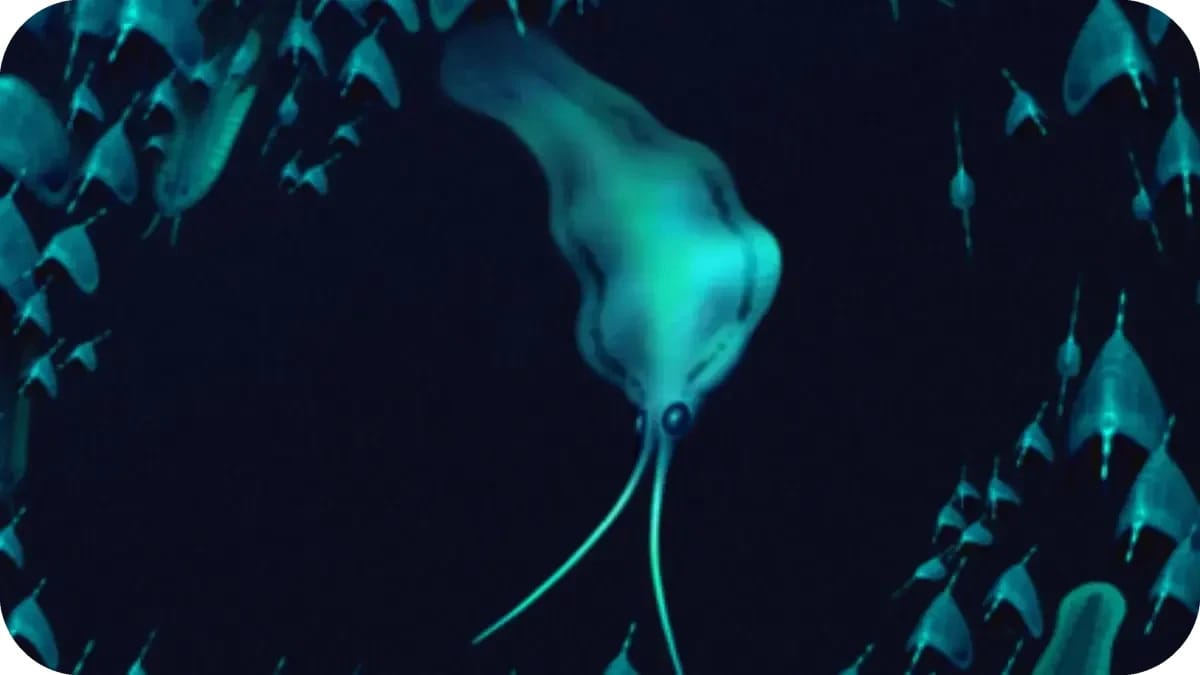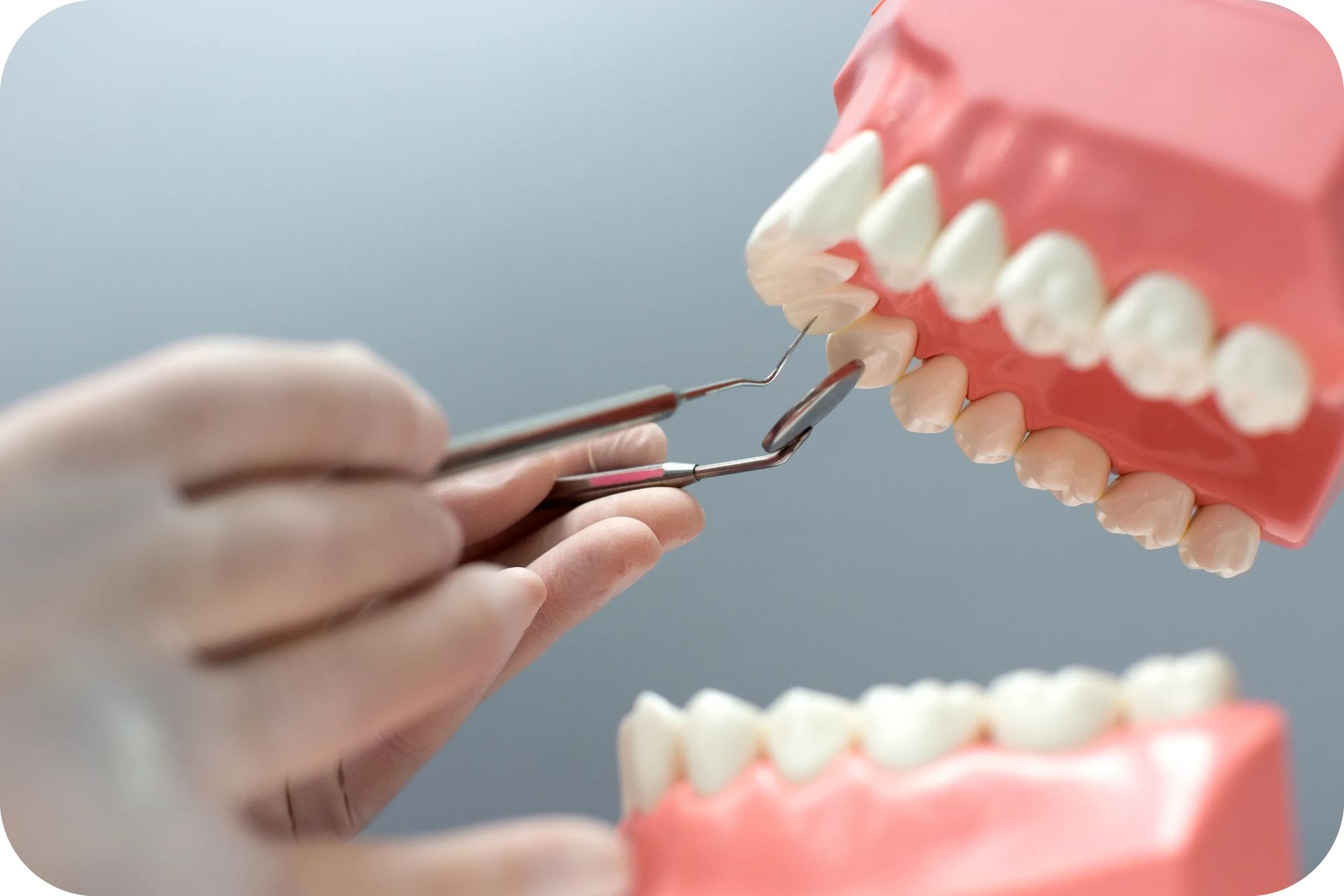- Daily Upsider
- Posts
- 🌞 Regrowing Teeth?
🌞 Regrowing Teeth?
Daily Upsider - Wednesday, July 30th, 2025
Wednesday, July 30th, 2025
Good Morning! 🌞
There’s Still Time to Call That Old Friend
Today is International Day of Friendship—a quiet but meaningful reminder that connection is a lifeline, not a luxury. Whether it’s a decades-old bond or a neighbor you’ve just begun to trust, friendships are the glue holding us steady in uncertain times.
So go ahead—write that message, make that call, or send that photo from 1987. You never know who needs it more: them, or you. 🌞
Today’s Upside
Earth Science
A Squid Imposter

Reconstruction of Nektognathus, swimming in the Cambrian Sea. - Bob Nicholls
A long-standing mystery about ancient squid-like creatures has finally been solved. Researchers from the University of Bristol, working with fossil finds from North Greenland, have uncovered the true origins of nectocaridids—enigmatic animals that lived over 500 million years ago. With heads and tentacle-like appendages, these creatures bore a striking resemblance to early cephalopods, the group that includes squids, cuttlefish, and octopuses. For years, scientists believed that’s exactly what they were. But new evidence reveals a surprising twist: nectocaridids weren’t cephalopods at all—they were early relatives of arrow worms.
Dr. Jakob Vinther of the University of Bristol had long been skeptical of the cephalopod classification. A 15-year-old study based on Burgess Shale fossils had placed nectocaridids within the cephalopod lineage, but the anatomical details never quite fit. Hoping to clarify their place in the evolutionary tree, paleontologists launched expeditions to Sirius Passet, a renowned Cambrian fossil site in North Greenland known for its exceptional soft tissue preservation. There, they discovered 25 well-preserved nectocaridid fossils—some containing traces of nervous system structures. “We discovered our nectocaridids preserve parts of their nervous system as paired mineralised structures, and that was a giveaway as to where these animals sit in the tree of life,” said Vinther.
The clinching evidence came from a preserved ventral ganglion—a nerve mass unique to arrow worms. “We now had a smoking gun to resolve the nectocaridid controversy,” said Dr. Tae-Yoon Park of the Korean Polar Institute. “Nectocaridids share a number of features with some of the other fossils that also belong to the arrow worm stem lineage.” Though they appeared squid-like, many of these traits were simple adaptations for swimming—similar to how marine reptiles and whales evolved fish-like forms. Further comparisons with fossil arrow worms such as Timorebestia and Amiskwia confirmed the link. The team named the species Nektognathus evasmithae, in honor of human rights advocate Professor Eva Smith. “So, the ancestors of arrow worms were really complex predators, just like the squids that only evolved about 400 million years later,” Vinther said. Far from passive drifters, these ancient swimmers were equipped with camera-like eyes, long antennae, and stealthy hunting skills—“a smart and stealthy fighter,” as Vinther put it.
Health Science
Regrowing Teeth?

Freepik
The human body contains 206 bones—flexible, resilient structures made of calcium, minerals, and collagen that enable movement and can even regenerate after a break. Teeth, however, don’t share that regenerative power. Despite being the hardest substance in the body due to their enamel coating, once damaged, teeth cannot repair or regrow. That may soon change, thanks to a groundbreaking development in Japan: scientists have created an experimental drug designed to regrow human teeth, with clinical trials already underway.
Led by Dr. Katsu Takahashi, head of dentistry at Kitano Hospital in Osaka, the research builds on earlier discoveries involving a protein called USAG-1, which suppresses tooth development. In 2021, researchers from Kyoto University used a monoclonal antibody to block USAG-1 and its interaction with bone morphogenetic proteins (BMPs), successfully triggering new tooth growth in animals. “We knew that suppressing USAG-1 benefits tooth growth. What we did not know was whether it would be enough,” Takahashi said at the time. Encouraged by promising results in ferrets—whose dental development mirrors that of humans—his team is now testing the therapy in people.
The current trial, which began in September 2024, involves 30 men between the ages of 30 and 64 who are missing at least one tooth. The drug is administered intravenously and will be studied over 11 months. No side effects were seen in animal models. If successful, the next step is a pediatric trial for children aged 2 to 7 with congenital tooth loss. The long-term vision is ambitious: a tooth-regrowing drug available to the public by 2030. “While there has been no treatment to date providing a permanent cure, we feel that people’s expectations for tooth growth are high,” said Takahashi. Eventually, he hopes the therapy could restore teeth for anyone who has lost them—ushering in a new era of regenerative dentistry.
Lifestyle
Dogs’ New Beginnings

Senior dogs, including Maya (center) – Submitted by The Grey Muzzle Organization
Last week, the Grey Muzzle Organization—the nation’s largest nonprofit dedicated solely to senior dogs—announced a record-breaking $1.57 million in grants to 119 animal welfare groups across the U.S. It’s the largest funding round in the organization’s history, supporting efforts to give older dogs the love, care, and homes they deserve. “If 50 is the new 30 for humans, why not for our older best friends?” said Grey Muzzle’s director. “Senior dogs have so much life to live, and love to give, yet they’re often the last to be adopted and the first at risk when shelters run out of space,” added Denise Fleck.

Credit: Golden Bark – submitted by The Grey Muzzle
The grants, distributed to organizations in 33 states, will fund medical and dental care, adoption initiatives, foster and hospice programs, and other vital services that help senior dogs stay in their homes—or find new ones. Many older dogs arrive at shelters with untreated health issues. But now, thanks to this funding, dogs like Maya—who spent a decade confined in a breeding pen and faced euthanasia due to shelter overcrowding—have a second chance. A sanctuary in Arizona took her in with help from Grey Muzzle’s grant. “I am so excited that her story is getting out there to help raise awareness about senior dogs,” said her new owner, Caroline Mirtich.
Since 2008, Grey Muzzle has awarded $7.3 million in grants to senior dog programs across the country. Among this year’s recipients are The Golden Bark Foundation, a volunteer-run Utah rescue focused on fostering aging dogs. Their grant will go toward dental care, their top medical expense, since 80% of their dogs suffer from serious dental disease. Another grantee, Czar’s Promise in Wisconsin—named after a Great Pyrenees—supports families managing pet cancer; their funds will cover chemotherapy and radiation for dogs aged 7 and older. With this new wave of support, more senior dogs will get the care they need and the homes they deserve in their final years. A full list of 2025–26 grantees is available on the Grey Muzzle website.
Support Daily Upsider!
Help our mission to share positive, meaningful news! Your support keeps us going without the need to bombard you with annoying ads!

Midweek check-in: Have you unclenched your jaw today? Breathed from your belly? Drunk water that wasn’t coffee?
Today, we’re putting you back on your own to-do list. Your body holds stress like a suitcase it never got to unpack—but small habits can lighten the load.
💡 Wellness Tip of the Week:
Try the “5-5-5 Reset” —
5 deep belly breaths
5 stretches (neck rolls, shoulder shrugs, wrist circles, etc.)
5 minutes with no screens, just stillness or a view
Doesn’t seem like much? Your nervous system will thank you.
You’re not behind, you’re just healing. Keep going, gently.
Mind Stretchers
⁉️
"I’m never shy of stormy skies,
I open wide but have no eyes.
Though I may turn with wind's wild dance,
In rain or shine, I take my stance.
Held above, yet not too proud—
What am I, beneath the cloud?"
Yesterday’s Answers to the Mind Stretchers:
I have two blades but never bite, I open wide, then close real tight. I love to split but never fight— Snipping through your work just right. What am I? — a pair of scissors! ✂️ Sandra Gottschalk got this correct first! 🌞
Be the first to send us the correct answer for today’s mind stretcher for a shout-out with the answer tomorrow. Just send us the answer and your name to [email protected] or reply to email.
From the Community
If you have any uplifting stories and experience you might want to share, send those over to [email protected] for the chance to be featured.
Reply